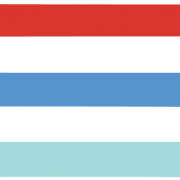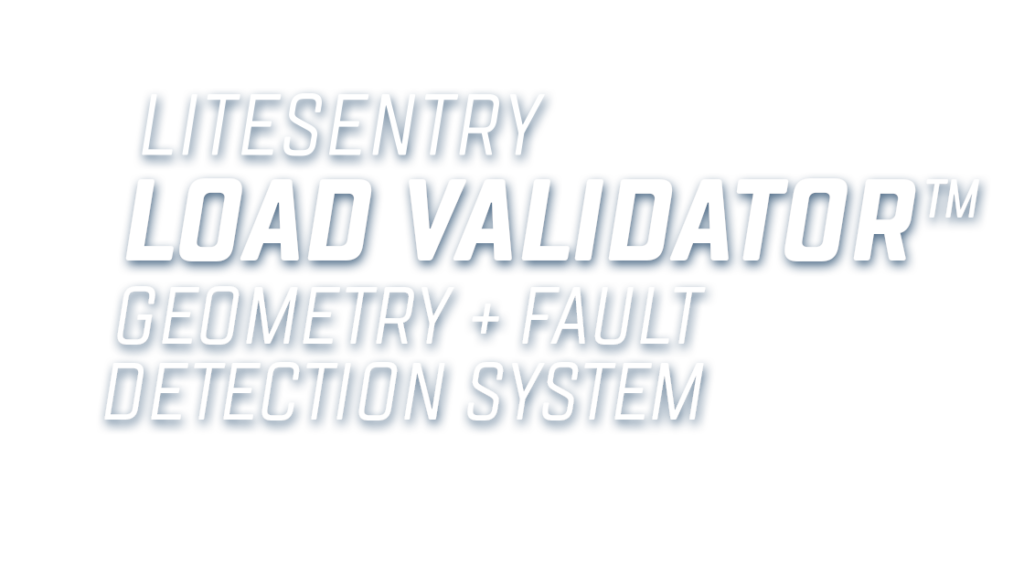LOAD VALIDATOR™
GEOMETRY + FAULT DETECTION SYSTEM FOR GLASS
The Load Validator™ provides an accurate, repeatable, consistent measurement of glass size, load size, and critical fault conditions likely to cause glass breakage and line interruptions.
Load Validator technology is available as a stand-alone system or included with the Owl 5.
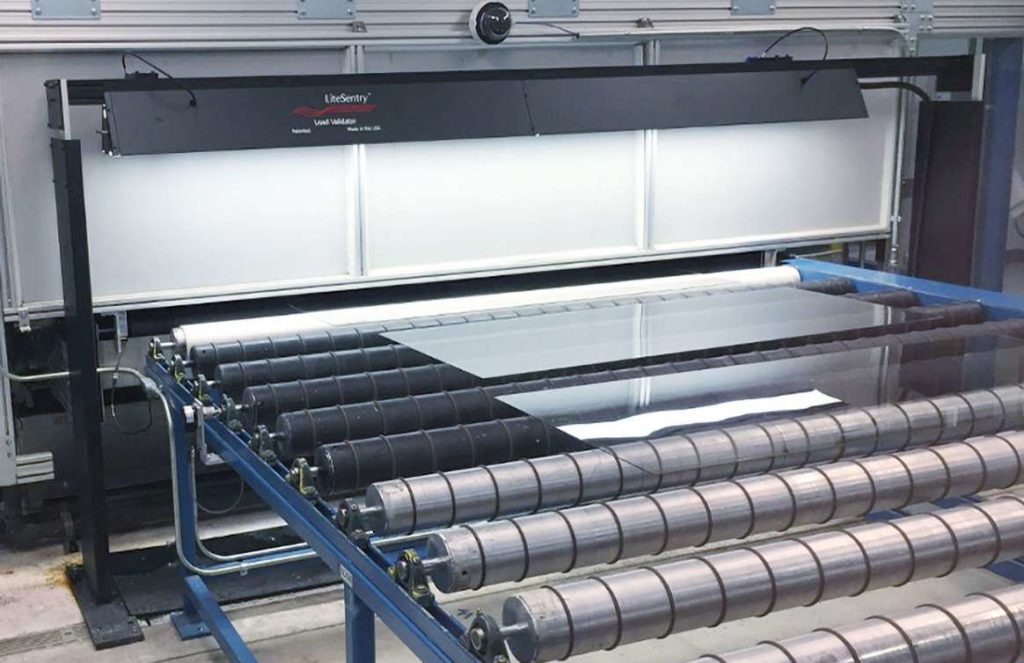
Load Validator™ Geometry + Fault Detection System
» Key Application: Coating Line, Tempering Furnaces
» For use on critical continuous processes such as a high vacuum coating system or washer preceding tempering.
» Detect fault conditions in the glass or load geometry.
» Alarm the conveyor system to stop the glass load before the load enters the continuous process.
Owl 5 Furnace Optimization System
» Key Application: Tempering Furnaces
» Discern most colored glass, as well as various coating & colored glass combinations
» Automated measurement of Thickness,
»Size, Coating (LowE 1, 2, 3, i89, Non-coated), Locations of parts
»Detect faulty loads
»Real-time feedback to the furnace
»Stop conveyor in event of a fault
»Systematic and repeatable adjustments made to furnace with no operator interruption
Ensures correct load geometry and detects faults before glass enters critical processes
The Load Validator™ is installed on the production line prior to critical continuous processes, such as high vacuum coating systems or washer stations preceding tempering. Real-time, 100% inspection collects, analyzes, and reports out data on every glass sheet. Detection of non-conforming loads or defective glass triggers alarms that stop the conveyor system, preventing the defective material from furthering processing.
Load Validator HMI
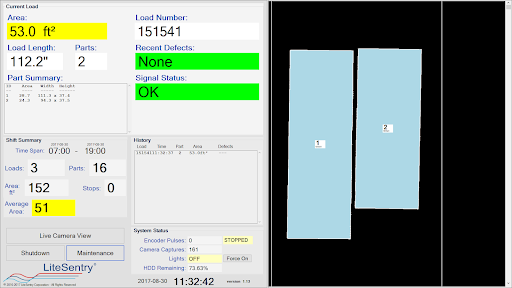
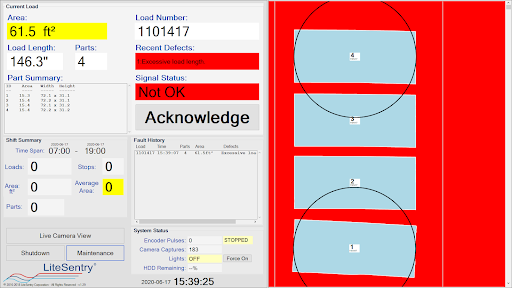
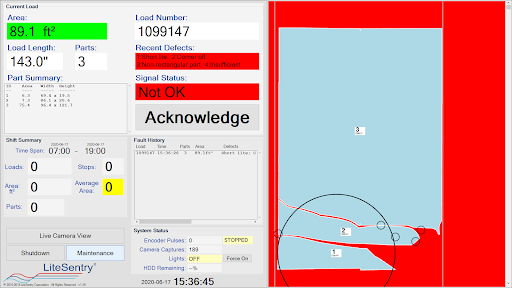
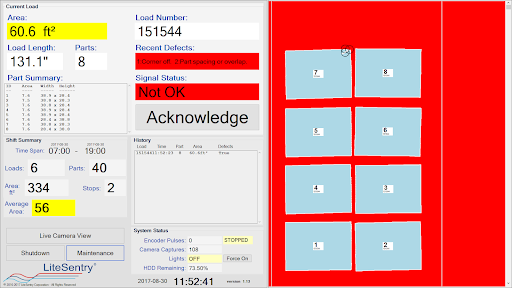
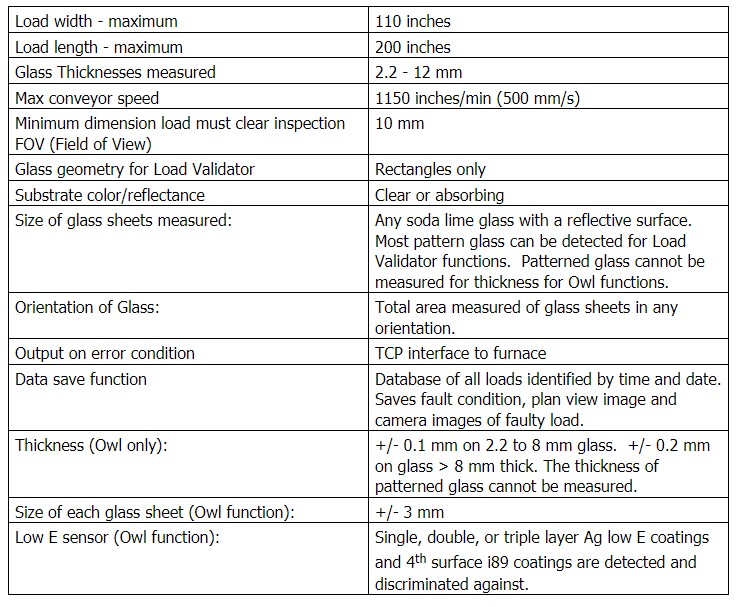
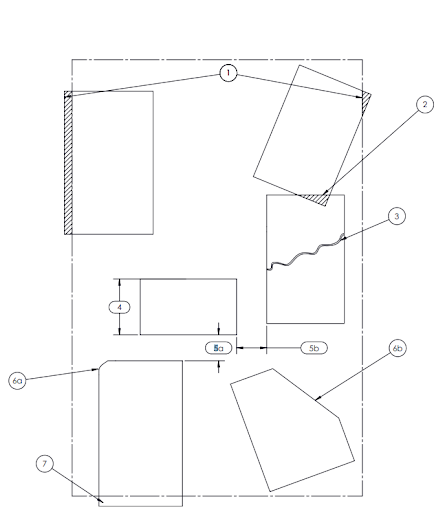
| # | CONDITION | TOLERANCE |
| 0 | NO ERROR | N/A |
| 1 | WIDE LOAD | +/- 3mm |
| 2 | PART OVERLAP | 6mm |
| 3 | BROKEN GLASS | ANY SEPARATION |
| 4 | SHORT PART | +/- 12mm* |
| 5 | MINIMUM DISTANCE BETWEEN PARTS TRAVEL DIRECTION (5a) CROSS CONVEYOR (5b) | +/- 12mm +/- 3mm |
| 6 | CORNER OFF (6a) NON-RECTANGULAR (6b) | 6mm >120mm |
| 7 | LONG LOAD | +/-12mm* |
ROI of LiteSentry Load Validator technology
Load Validator technology pays for itself by preventing as few as 4 to 5 shutdowns based on:
- 5 to 20 hours per shutdown
- Minimum of $2,000 per hour of non-production NOT including lost revenue
- $20,000 average financial impact of coater interruption

- Improves optical quality by optimizing heat-time or heat-profile and preventing overheating of small loads
- Eliminates lost production due to recipe changes
- Eliminates operator errors due to incorrect inputs
- Detects 7 fault conditions including wide load, part overlap or stacking, broken glass, short part, minimum distance between parts, corner off, and long load.
- Ability to stop a faulty load from moving into the furnace.

- Improves optical quality by optimizing heat-time or heat-profile and preventing overheating of small loads
- Eliminates lost production due to recipe changes
- Eliminates operator errors due to incorrect inputs
- Non-contact, real-time measurement of glass size, thickness and low-E coating
- Detects 7 fault conditions including wide load, part overlap or stacking, broken glass, short part, minimum distance between parts, corner off, and long load.
- Ability to stop a faulty load from moving into the furnace.

Typical Load Validator screen

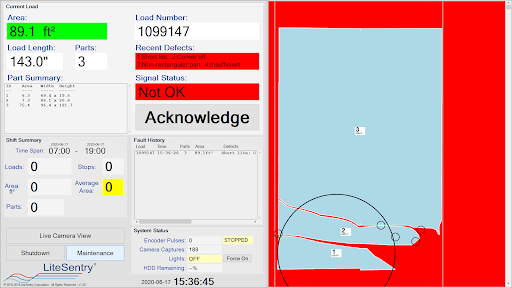


ROI of a LiteSentry Owl
What is the value of 10 seconds In a 24-hour period?
240 second cycle time = 360 load vs @ 230 second cycle time = 376 loads
16 loads additional throughput per day
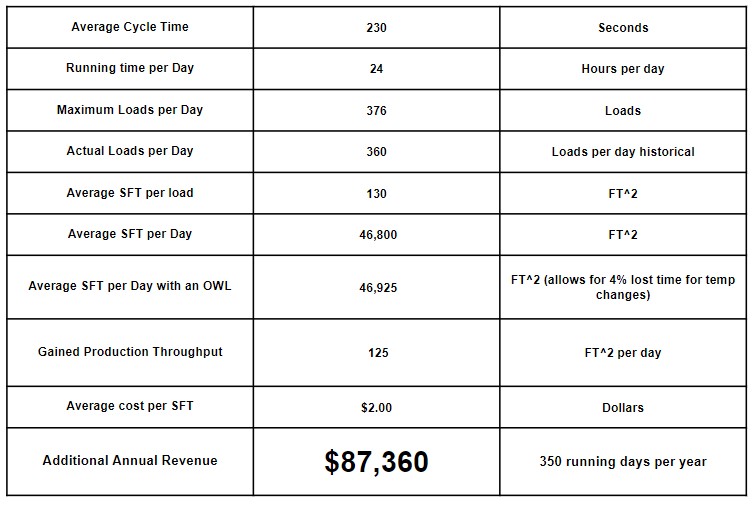
Load Validator technology pays for itself by preventing as few as 4 to 5 shutdowns based on:
- 5 to 20 hours per shutdown
- Minimum of $2,000 per hour of non-production NOT including lost revenue
- $20,000 average financial impact of coater interruption







